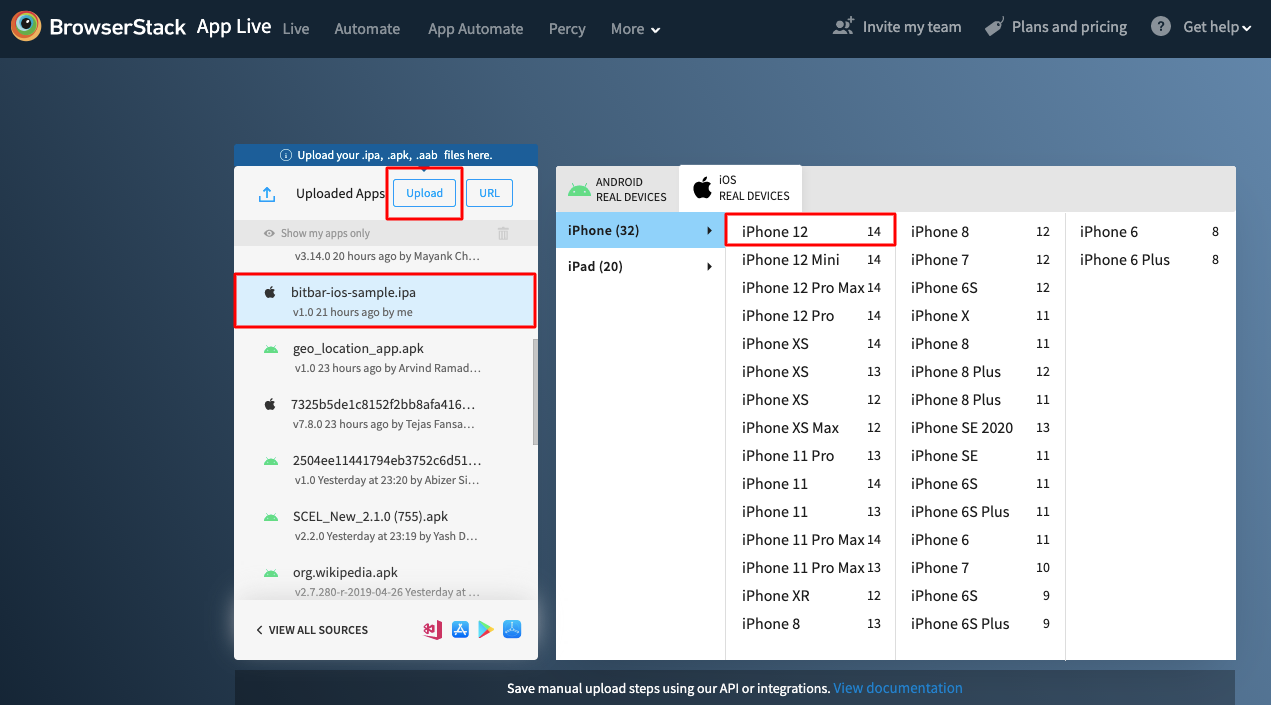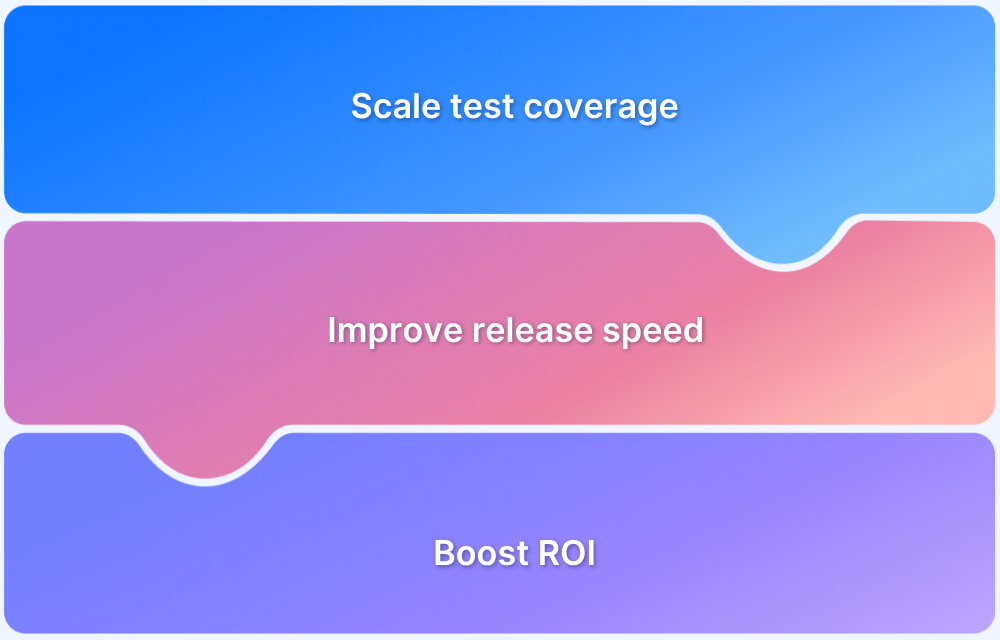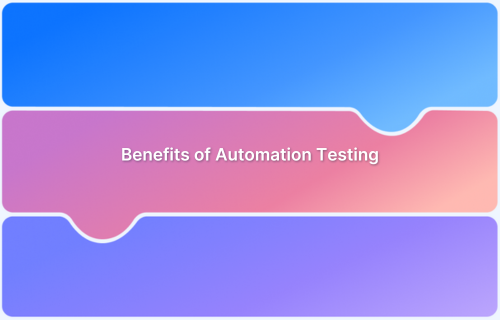Overcoming Key Challenges in Test Automation
By Shreya Bose, Community Contributor - May 30, 2022
While the core benefits of automation testing are no longer in question; one must be aware of the challenges involved if they are to get the best possible results from implementing automation testing.
Automation testing is no longer just an option due to the demands upon testers’ time and customer demands for fast, reliable software updates and improvements at regular intervals. For testing teams to keep up with market forces and business goals, they have to use automation in their QA pipelines. And let’s be honest, starting with automation can be rife with obstacles. The challenges of test automation are no small matter.
Read More: Challenges Faced by QA Teams
To make your life a little easier, this guide will lay out the key challenges in test automation and ways to overcome them.
Identifying The Right Automation Tool or Framework
Once you receive approval and a dedicated budget from management, you’ll need to pick a tool to run your automated tests. This is, undoubtedly, the most important decision to make when starting on your automation journey – and one of the most strident challenges faced in automation testing.
Given the number of free and paid tools available in the market, choosing the one that fits your technical and business objectives can be tricky. Depending on the nature and extent of automation you want to incorporate, the tool must offer specific capabilities such as integrations with certain frameworks, support for certain programming languages, etc. It is best to validate each tool and check how they rate in terms of:
- Ease of integration and usage
- Maintenance effort requirements
- Scalability
- Integration with necessary third-party tools like Jira, Jenkins, Bamboo, Selenium, Cypress, Espresso, etc.
While Selenium is the undisputed leader in automation, newer frameworks like Cypress and Puppeteer offer unique features that cannot be completely ignored. Additionally, whatever tool you choose must give you access to real browsers, devices, and operating systems (both latest and older models/versions) to monitor your software’s performance in real user conditions. Emulators and simulators simply do not provide the accuracy of real devices, and testing on them cannot offer conclusive, real-world-ready results.
Building an in-house device lab takes enormous time, money, and human effort. It is much easier to use a more reliable real device cloud like the one offered by BrowserStack. Its real device cloud of 3000+ browsers and devices (including thousands of desktop and mobile devices) is accessible 24×7 for manual and automated tests (websites and apps), which means you never have to buy any devices for testing purposes.
You have to sign up for free, select the real device-browser-OS combination you want to test on, and start testing. Updating, maintaining, and purchasing new devices are no longer your concern; you just log in and get 100% accurate test results.
Test on Real Browsers & Devices
Employ Skilled Testers or Train Existing Teams
Contrary to popular belief, automation tests cannot be run by any tester with some experience in the field. Similarly, any dev without prior training cannot automate tests for maximum efficiency and coverage. Given that the investment in automated testing is much more than manual tests, badly designed tests do nothing but slow down the pipeline and offer an undesirable ROI.
Learn More: Guide To Test Automation ROI
Designing, configuring, and implementing effective, eloquent tests takes significant training and experience. Furthermore, certain testing tools may require specific skills to leverage their full potential. Therefore, identifying and hiring skilled test engineers is integral to building a robust automation funnel.
However, since such testers are in high demand, you might not be able to hire a whole team quickly enough after deciding to shift to automation. Additionally, highly employable testers like these tend to command formidable remuneration, so depending on your budget, it may not be possible to hire too many of them at your current juncture.
A workaround here may be to stretch yourself and hire one of two extremely skilled and experienced testers. Ensure that they are the kind of individuals who aren’t just good with current technologies but also stay up to date with upcoming development in tech and testing methodologies. They should also have an adequate understanding of development, management, and familiarity with customer behavior/expectation, which helps them design the most relevant test cases.
Once they are onboard, create the infrastructure for them to train and educate existing engineers in basic and advanced strains of automation testing. While this may involve some initial drain on time and money, it will save you both in the long run.
Pro-Tip: Beginners in automation testing can also use portals like BrowserStack Test University, which offers access to real devices for a hands-on learning experience. Master the fundamentals of software testing (manual and automated) via quick but information-filled lessons that you can implement on actual devices to sharpen your testing chops.
Deciding on Test Automation Strategies
Automation testing has advanced in leaps in bounds, with multiple effective techniques devised to verify different aspects of any software in various conditions. However, not every strategy matches each testing team’s technical and business goals, and one of the major challenges faced during automation testing lies.
To decide on which test strategy serves you best, answer the following questions:
- What exactly are the capabilities of my automation testing tool?
- What practices can I use to create a stable, repeatable, replicable testing pipeline?
- What are my (the team’s) eventual goals and expectations from automation?
- What tests can be implemented with minimal long-term effort and expense? (Note: Initially, high costs and effort can be justified if the final results offer the requisite value)
It might be best to consult skilled automation testers, attend some thought leadership conferences/webinars, sign up for relevant newsletters/blogs/information sources, and have meetings with fellow test managers to understand what would work for you. If you start with automation testing, you’ll have to do a fair amount of research to set up processes and protocols. However, if done right, you will have significant success to report.
Setting Realistic Expectations
Let’s get one thing straight – automation is not a magic wand. It will accelerate results and make them more accurate, but it will not replace manual testing. No machine can replicate human supervision and judgment’s full extent and ability. All automated tests must be examined and verified by a qualified QA expert.
Additionally, remember that testing is never truly complete. No matter how comprehensive your test scenarios and test cases are, you will always have to exclude some features to meet increasingly tight release deadlines. This is why all testing, manual or automated, is an iterative process.
Additionally, automation tests cannot fix and generate results in already faulty systems. Before implementing automation, you’ll have to examine and debug your foundational tech stack. Also, keep in mind that certain tests (UAT, for example) cannot be automated, just like some tests must be automated (regression tests).
Set realistic expectations of automation from the beginning. When conversing with management about bringing automation into the testing ecosystem, be clear about what can be achieved by automated tests – both in the initial and later stages. This is among the bigger challenges faced by automation testers.
Initial Investment of Capital
Make no mistake – automation testing comes with high initial costs. Stakeholders and management personnel approving budgets must be clear that you will have to spend on myriad expenses – tools, skilled personnel, additions to infra, licensing costs, operational costs, etc. Even if you are using open-source frameworks, you’ll have to spend on training your team in effective, intelligent usage of said frameworks. This is among the real-time challenges in automation testing and a crucial obstacle in getting the funding you need.
Read More: Calculating Test Automation ROI: A Guide
Costs will also rise when scaling tests, which any team would have to do to get the most out of their automation cycles.
However, given the results, there are enough resources to prove that the investment is worthwhile. The refinement of workflows, lesser time-to-market, greater accuracy and efficiency, and smarter redistribution of human resources will generate a wildly positive ROI.
Additionally, try to convey the fact that as an organization and its software offerings grow, manual testing is simply not going to be sufficient in meeting customers’ needs, expectations and preferences. Your customers want their websites and apps up-to-date, and they want this fast. Without the advantage of automation, you simply will not be able to keep up with your competitors.
In other words, the cost of test automation is the cost of doing business.
Instituting New Modes of Collaboration & Communication
Collaboration within and between teams is essential, no matter the form of testing – manual or automated. However, automation testing is a whole other ball game since tests must be designed, configured, refined, run, and interpreted in particularly unique ways. To successfully leverage automation testing, team leaders and test managers must figure out how to get individual testers to work together to facilitate newer protocols and processes.
Follow-Up Read: Effective Tips For Remote Testing Teams
More than manual testing, automation testing requires more planning, foresight, data exchange, and collaboration. This is because automated tests heavily depend on existing test data, testers’ skills with tools, and proofs-of-concept. There is no way to gather these prerequisites without testers across the dev teams working together.
Since the scope of automation tests tends to be larger than manual tests (which is the entire point of implementing automation), it is not possible to design effective test cases without interacting with the relevant personnel. In this case, the appropriate personnel are not just devs but also business analysts, project managers, designers, and other stakeholders. Their input is necessary to narrow down what needs to be automated, the plan and scope of the tests, and what timelines should be adhered to.
Additionally, their assistance is also integral to identifying the key metrics to track the QA process.
Pro-Tip: Don’t forget to closely document all findings, results, errors, and anomalies that come up during the process, and share such documentation with the whole team so they can adjust their contributions accordingly for the next sprint or test cycle.
Concluding Notes
Being closely aware of challenges in test automation and its best practices is of utmost importance if you are to establish sustainable automation testing pyramids that can scale and give you appropriate returns on your initial investment. But once you are aware of the technical challenges in automation testing, you can be adequately prepared to confront and resolve them when they show up in your day-to-day operations. Use the information in this article to give yourself a step up when bringing automation into the QA fold, and give yourself that formidable edge over your competitors.




